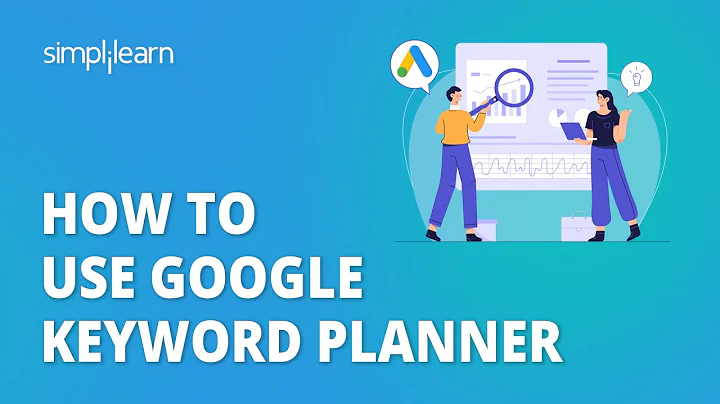Mastering Internet Marketing Abbreviations: A Comprehensive Guide
Table of Contents
- Introduction
- API - Application Program Interface
- BoFu - Bottom of the Funnel
- CPC - Cost Per Click
- CRO - Conversion Rate Optimization
- CTA - Call to Action
- CTR - Click-Through Rate
- HTML - Hypertext Markup Language
- KPI - Key Performance Indicator
- MOF - Middle of the Funnel
- MT - Modified Tweet
- MQL - Marketing Qualified Lead
- PPC - Pay-Per-Click
- ROI - Return on Investment
- NRT - Retweet on Twitter
- SEM - Search Engine Marketing
- SEO - Search Engine Optimization
- SERP - Search Engine Results Page
- SQL - Sales Qualified Lead
- TOFU - Top of the Funnel
- UX - User Experience
- WYSIWYG - What You See Is What You Get
- Conclusion
Introduction
In the world of internet marketing, staying on top of the latest trends and understanding the jargon is crucial for success. From API to WYSIWYG, there are a plethora of marketing abbreviations that can be overwhelming to keep track of. But fear not, as in this article, we'll walk you through the A to Z of marketing abbreviations, providing you with a comprehensive guide to understanding each term and its significance in the marketing landscape.
API - Application Program Interface
API, short for Application Program Interface, is a technology that allows different software applications to communicate and interact with each other. It enables seamless integration between various web applications, eliminating the need for users to sign in and out of multiple platforms. For instance, when you upload a photo on Instagram, you can conveniently share it on Facebook and Twitter through Instagram's API without the hassle of visiting each platform individually.
BoFu - Bottom of the Funnel
BoFu, which stands for Bottom of the Funnel, refers to the last stage of the buying process or cycle. At this point, a lead shows a high level of interest and is considered a potential customer. They have moved beyond the initial awareness stage and are now deeply engaged in considering the products or services offered. BoFu is a critical phase where effective marketing strategies can be employed to push leads towards conversion.
CPC - Cost Per Click
CPC, or Cost Per Click, is an advertising model in which advertisers pay for each click on their ads. Commonly associated with Google AdWords, CPC determines the amount an advertiser spends when someone clicks on their ad. It serves as a performance-based metric, offering a cost-effective approach to reach a target audience and drive traffic to a website.
CRO - Conversion Rate Optimization
CRO, also known as Conversion Rate Optimization, involves the process of refining and enhancing various elements, such as layout, content, and tags, to boost the conversion rate. Conversion rate refers to the percentage of visitors who take a desired action, such as making a purchase or filling out a form. CRO aims to identify the most effective combination of elements that result in a higher conversion rate, ultimately increasing revenue and improving overall business performance.
CTA - Call to Action
CTA, or Call to Action, is a powerful marketing technique that encourages users to take a specific action, such as clicking a link, subscribing to a newsletter, or making a purchase. It serves as a prompt that directs users towards the desired conversion goal. By using compelling and persuasive language, a well-crafted CTA can significantly increase user engagement and drive conversions.
CTR - Click-Through Rate
CTR stands for Click-Through Rate, which is a percentage indicating how many people click on a specific ad or link relative to its total impressions. For example, if an ad receives 100 impressions but only generates 20 clicks, the click-through rate would be 20%. CTR is an essential metric used to measure the effectiveness of an ad campaign in terms of engaging and drawing users to click on the desired link.
HTML - Hypertext Markup Language
HTML is an abbreviation for Hypertext Markup Language, which serves as the standard language for creating web pages. It utilizes tags to structure and organize content, allowing browsers to interpret and present information to users. HTML plays a crucial role in defining the layout, formatting, and overall structure of a web page.
KPI - Key Performance Indicator
KPI, or Key Performance Indicator, is a measurable value that indicates the effectiveness of a marketing strategy or campaign. Common KPIs include conversion rate, average time spent on a website, customer acquisition cost, and return on investment (ROI). KPIs provide valuable insights into a business's performance, enabling marketers to gauge the success of their efforts and make data-driven decisions.
MOF - Middle of the Funnel
MOF, or Middle of the Funnel, represents the stage in the buying cycle where a lead demonstrates a significant level of interest and moves into deeper consideration. They have progressed beyond the initial awareness stage and are actively evaluating the available options. Effective marketing tactics at the MOF focus on nurturing leads, providing relevant information, and building trust and credibility.
MT - Modified Tweet
MT refers to a Modified Tweet on Twitter. It differs from a regular retweet (NRT) as it allows users to add their own commentary or make alterations to the original tweet while giving credit to the original author. By modifying a tweet, users can personalize the message and make it more relevant to their audience.
...







